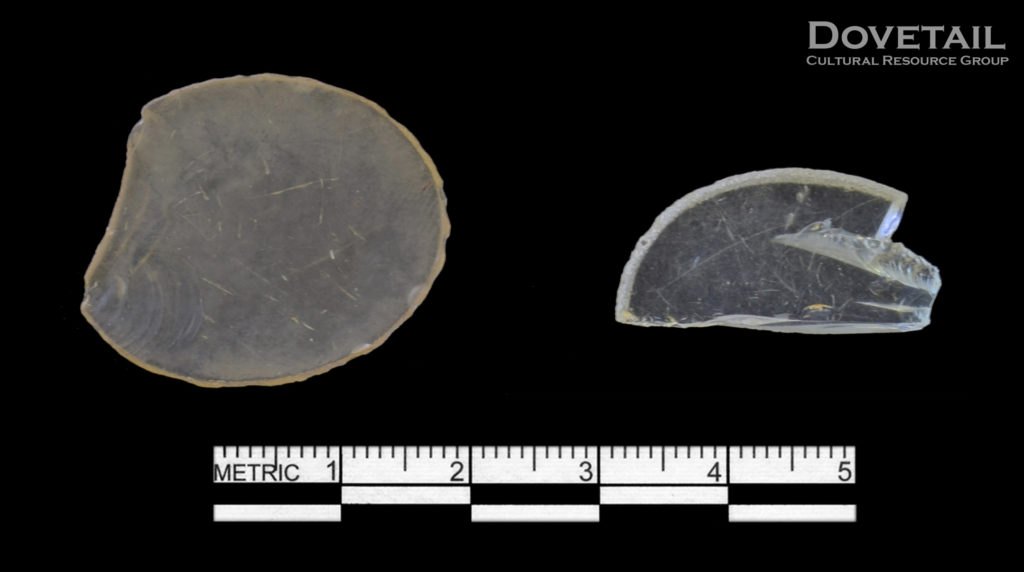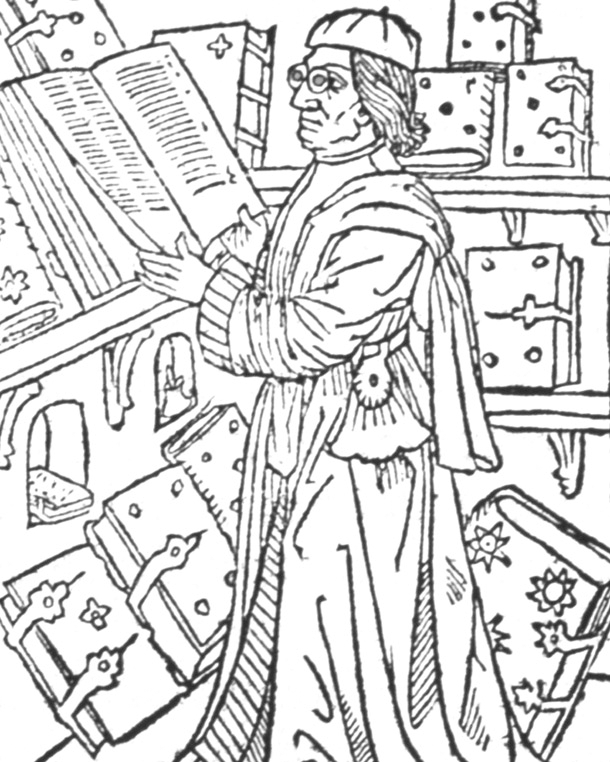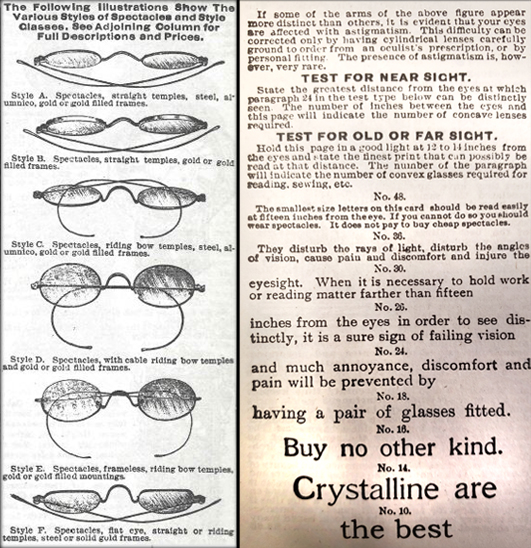Featured Fragment – Historic Eyewear
By Kerry S. González
We’ve decided to continue our series highlighting the artifacts recovered from the Trogdon-Squirrel Creek site in Randolph County, North Carolina for the month of September. On behalf of the North Carolina Department of Transportation (NCDOT), Dovetail Cultural Resource Group conducted data recovery excavations at the site, guided by the data recovery plan authored by NCDOT (Overton 2014).
The artifacts pictured below are eye glass lens fragments dating to the early-twentieth century (Photo 1). Both lenses are round as opposed to earlier styles that were more ovoid. The lens on the right is made of crown glass with a diamond-beveled edge and was concavo-convex in design, placing it in the 1900–1930-time period (John Tull, personal communication 2017). Furthermore, the lens was tested with a Topcon Lensmeter, a machine that determines the strength of a prescription. This particular lens gave a reading of +4 indicating that the owner of the glasses was moderately farsighted. The second lens was too scratched to provide a prescription reading but given its shape it likely dates from 1900–1930 as well.
According to several sources, the Romans are credited with using a form of magnified glass to see small items at a larger scale (allabouteyes.com 2019). However, it wasn’t until the 1200s that we see the first evidence of wearable glasses (allabouteyes.com 2019). The first written reference to eyeglasses is in a book titled De iride (“On the Rainbow”) by Robert Grosseteste (circa 1235) (OpticianU 2018). The book mentions using a lens to “read the smallest letters at incredible distances” (OpticianU 2018). Reportedly, these “primitive glass-blown lenses were set into wooden or leather frames (or occasionally, frames made from animal horn) and then held before the face or perched on the nose” and were primarily used by monks for reading, as cited in Archives of Ophthalmology (2002) (Figure 1).
It wasn’t until the 1700s that eyewear began to improve and from this point on eyeglasses evolved at a rapid pace (allabouteyes.com 2019). While Benjamin Franklin is often credited for inventing bifocals in 1784 when he glued his distance glasses and reading glasses on top of each other, some historians believe he is unduly credited with this invention due to his historic importance (OpticianU 2018). By the late-nineteenth century glasses were being mass produced and advertised in places like the Sears & Roebuck catalog where one could even give themselves an eye exam to determine the strength of glasses needed (Figure 2).
It is artifacts like these eyeglass fragments that really speak to the occupants of a site. They are tangible and relatable to the young and old, especially when you hold up a lens and see through the eyes of its owner 100 years ago.
Any distributions of blog content, including text or images, should reference this blog in full citation. Data contained herein is the property of Dovetail Cultural Resource Group and its affiliates.
References:
Allabouteyes.com
2019 See Into The Past: The Fascinating History of Eyeglasses. Electronic document, https://allabouteyes.com/see-past-fascinating-history-eyeglasses, accessed September 2019.
Letocha, J., and M. Dreyfus
2002 Archives of ophthalmology 2002. Early Prints Depicting Eyeglasses (Figure 4). Electronic document, https://www.semanticscholar.org/paper/Early-prints-depicting-eyeglasses.-Letocha-Dreyfus/f952e6a9a6509a4da61e6e48b1e61a6d91331818, accessed September 2019.
OpticianU
2018 Eyeglass History – Seeing Through the Ages. Electronic document, https://www.op
ticiantraining.com/eyeglass-history-vision-through-the-ages/, accessed, September 2019.
Overton, Brian
2014 Archaeological Data Recovery Plan: Site 31Rd1426, Randolph County, North Carolina. North Carolina Department of Transportation Human Environment Section, Raleigh, North Carolina.
Sears, Roebuck and Company Catalogue
1897 The Sears, Roebuck Catalogue. Sears, Roebuck and Company. Skyhorse Publishing, Inc., New York, New York.



